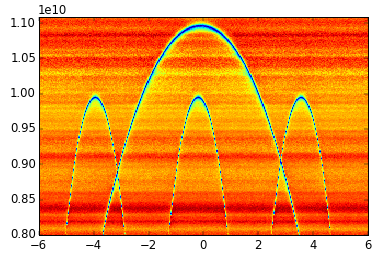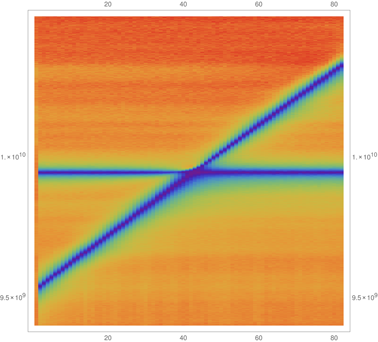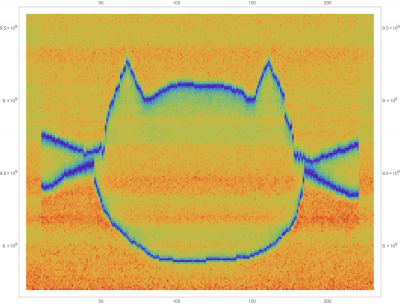By on the 20th July 2016
As first experimentally demonstrated by Astafiev et. al. (Science 327, pp. 840-843 (2012)) a superconducting qubit can serve as a frequency dependent mirror. If one sends microwaves to the waveguide the radiation will be reflected if in resonance with a qubit. This allows us to directly measure the transition frequency of the qubit as reduced transmitted signal. As an example, for two transmon qubits in a waveguide the absolute value of transmission can look like:

where the x-axis is the current through the magnetic coil which is used to tune frequencies of the qubit and y-axis is the frequency of the transmitted microwaves. The frequencies of the qubits as a function of the magnetic field are seen as blue lines. The figure shows that the qubits have slightly different maximum frequencies and are coupled differently to the magnetic coils.
With two independent coils we can have a full individual control for the qubit frequencies. We can choose to keep one qubit frequency fixed and tune another qubit through:

Alternatively one can use qubits as a drawing tools! Check out the cat art drawn in a single measurement run by a PhD student Andres Rosario.
The samples and the waveguide were designed and manufactured in KIT by a Master student Max Zanner supervised by Dr. M. Weides and Prof. A. Ustinov. Max visited our lab for several months this year and together with our Andres they plan to use two qubits in the waveguide to study properties of a Fabre-Perot resonator with mirrors replaced by qubits. For the first experimental demosntration of collective effects for qubits in a waveguide see our earleir work in ETH lab.




